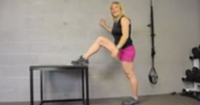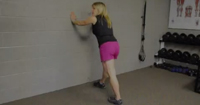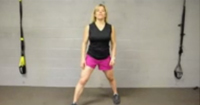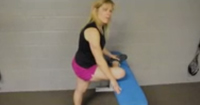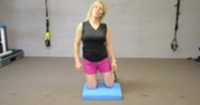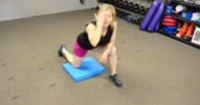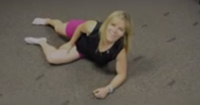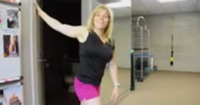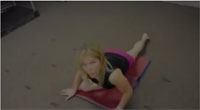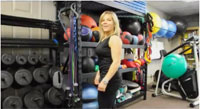Ten Minutes of Intermittent Movement for Every Hour of Sitting May Counteract Ill Health Effects of Prolonged Sitting
Ten Minutes of Intermittent Movement for Every Hour of Sitting May Counteract Ill Health Effects of Prolonged Sitting
In recent years, researchers have formed a strong consensus with regards to the health effects of sitting. In short, the more time you spend sitting, the shorter and less healthy your life will tend to be.
In fact, there are now over 10,000 studies showing that chronic sitting—at work, commuting, and watching TV at night—significantly impacts your cardiovascular and metabolic function.
For example, one 2012 meta-analysis1 found that those who sat for the longest periods of time on a daily basis were twice as likely to have diabetes or heart disease, compared to those who sat the least.
Another recent study2, 3, 4 found that women who sat for more than seven hours a day had a 47 percent higher risk of depression than women who sat for four hours or less per day.
Moreover, those who didn’t engage in ANY physical activity at all had a 99 percent higher risk of developing depression than women who exercised…
Tragically, more than half of American men, and 60 percent of American women, never engage in any vigorous physical activity lasting more than 10 minutes per week.5
This combination of excessive sitting and inadequate exercise has been shown to double the risk of heart failure in men.6, 7 It also raises your risk for insomnia, arthritis, and premature death from any cause.
Walk Off the Damage from Sitting…
What’s even more concerning is that studies8 also clearly show that these risk correlations hold true no matter how much you exercise. This was again demonstrated in a study9 published in August, in which six hours of uninterrupted sitting was found to counteract the positive health benefits of a whole hour of exercise!
Chronic sitting is actually an independent risk factor for poor health and early death, so the answer is to simply limit sitting as much as possible. Indeed, it’s becoming quite clear that intermittent movement is critical for health and longevity—perhaps even more so than a regular workout routine.
The good news is that you have virtually unlimited options when it comes to breaking up your sitting. From standing desks and office-friendly intermittent exercise to short walks; all of it counts.
One of the most recent studies10, 11 in this field found that taking a five-minute walk for every hour you spend in your chair can reduce the heart disease risks associated with chronic sitting.
Eleven healthy men aged 20-35 had their femoral artery function evaluated in two randomized trials. In the first trial, they sat for three hours without moving their legs.
In the second, they sat for three hours but walked on a treadmill for five minutes once every hour, at a mellow pace of two miles per hour. As reported by Science Daily:12
“[D]uring a three-hour period, the flow-mediated dilation, or the expansion of the arteries as a result of increased blood flow, of the main artery in the legs was impaired by as much as 50 percent after just one hour.
The study participants who walked for five minutes each hour of sitting saw their arterial function stay the same — it did not drop throughout the three-hour period…
‘American adults sit for approximately eight hours a day,’ [lead author Saurabh Thosar] said. ‘The impairment in endothelial function is significant after just one hour of sitting. It is interesting to see that light physical activity can help in preventing this impairment.'”
Although benefits were shown after just a five minute walk in this study, Dr. James Levine, co-director of Obesity Solutions at Mayo Clinic in Phoenix and Arizona State University, recommends getting at least 10 minutes of movement for every hour you sit down.
Walking Is a Good Option Even for Those with Chronic Disease and the Elderly
While I believe high intensity exercises are an important part of a healthy lifestyle, there’s no doubt that more people need to incorporate more walking into their daily lives. This may be particularly true for the elderly, or people struggling with chronic disease that prevents them from engaging in more strenuous fitness regimens. For example:
- A two-year long study published in the journal Respirology13, 14 showed that walking for two miles a day or more can cut your chances of hospitalization from a severe episode of chronic obstructive pulmonary disease (COPD) by about half.
- Another study published in the November 2013 issue of the journal Stroke15 found that daily walking reduced the risk of stroke in men over the age of 60.
Walking for at least an hour or two could cut a man’s stroke risk by as much as one-third, and it didn’t matter how brisk the pace was. Taking a three-hour long walk each day slashed the risk by two-thirds.
Quick and Easy Workplace Workouts
I recently interviewed Dr. James Levine who is the head of rehab at Mayo Clinic and he convinced me of the importance of merely walking around for 10 minutes every hour that you are sitting. Standup desks can also be very helpful. If that is not possible, then you can interrupt your sitting with the methods I review below. As discussed in my interview with Dr. Joan Vernikos,16 former director of NASA’s Life Sciences Division and author of Sitting Kills, Moving Heals, physical movements such as standing up or bending down increase the force of gravity on your body, and this is the key to counteracting the cellular degeneration that occurs when you’re sitting down.
A reasonable goal is to get out of your chair or couch every 15 minutes. The easiest strategy is to merely stand up and then sit back down. However, evidence suggests you’d be wise to go a little further—especially if you don’t exercise on a regular basis. There are plenty of ways to increase your movement at work, and I’ve included a whole series of basic to more advanced office-friendly exercises below. During work hours, it can be a challenge to remember to get out of your chair every quarter-hour, so an alarm can be quite helpful. A helpful tip would be to set a timer or use a timer on your cell phone.
Basic Office Workout Techniques
The following videos, featuring Jill Rodriguez, offer intermittent movement exercises you can do right at your desk. For a demonstration of each technique, please see the corresponding video in the two tables below. I suggest taking a break to do one set of three exercises, anywhere from once every 15 minutes to once per hour.
#1: Standing Neck-Stretch: Hold for 20 seconds on each side.
#2: Shoulder Blade Squeeze: Round your shoulders, then pull them back and pull down. Repeat for 20-30 seconds.
#3: Standing Hip Stretch: Holding on to your desk, cross your left leg over your right thigh and “sit down” by bending your right leg. Repeat on the other side.
#4: The Windmill: Stand with feet shoulder-width apart, then pivot your feet to the right. Push your hip out to the left. Raising your left arm skyward, and your right arm toward the floor, lower your body toward the floor while looking up, then raise your torso back to standing position. Repeat on the other side.
#5: Side Lunge: Starting with your feet together, take a medium step sideways, and bend down as if you’re about to sit. Use your arms for balance by reaching out in front of you. Return to starting position, and repeat 10-20 times. Repeat on the other side.
#6: Desk Push-Up: Place hands a little wider than shoulder-width apart on your desk. Come up on your toes to make it easier to tip forward. Lower your chest to the edge of your desk, and push back up. Do 10 repetitions.
#7: Squat to Chair: With your feet shoulder-width apart, sit down, reaching forward with your hands, and stand back up in quick succession. Do 15-20 repetitions.
#8: Single Leg Dead Lift: Place your right hand on your desk, and place your weight on your right leg. Fold your torso forward, while simultaneously lifting your left leg backward. Do 10 repetitions on each side.
#9: Mountain Climber: Get into a push-up position on the floor. Pull your right knee forward to touch your right wrist or arm, then return to push-up position. Repeat on the other side. Try to pick up the pace, and do 20 quick repetitions.
Standing Neck Stretch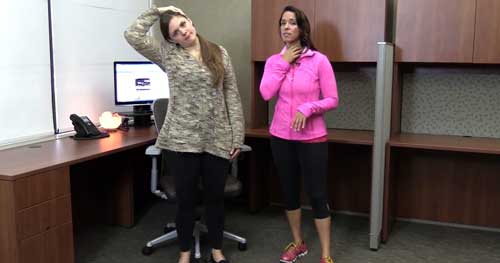 |
Shoulder Blade Squeezes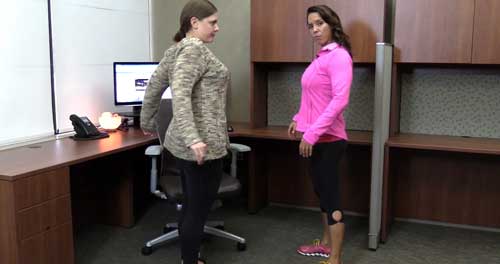 |
Standing/Seated Hip Stretch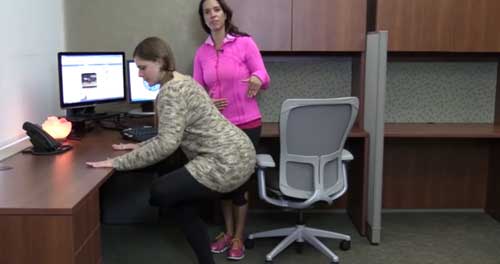 |
Windmill |
Side Lunge |
Push-up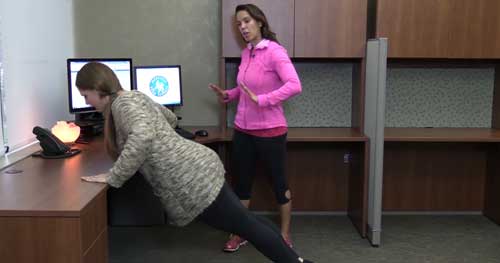 |
Squat to Chair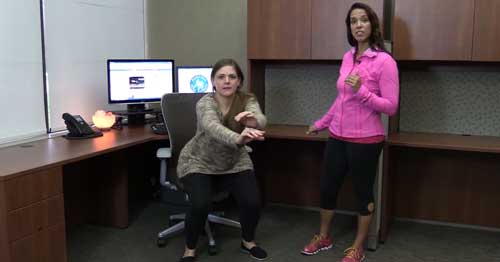 |
Single Leg Dead Lift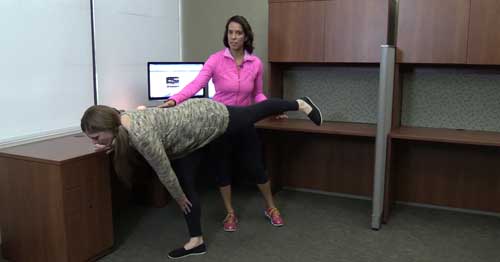 |
Mountain Climber |
Advanced Office Workout Routine
Below are some more advanced suggestions from fitness expert Lisa Huck. These movements are the ones I’m currently working with to interrupt my sitting. I suggest bookmarking this article so you can easily find all of these helpful videos, demonstrating each movement. Again, ideally you’ll want to do at least one of these exercises every 15 minutes. Alternatively, you can combine two or three in a three-minute break once or twice every hour.
#1: Standing Hip Flexor Stretch
#2: Standing Calf Stretch
#3: Standing Inner Thigh Stretch
#4: Standing Back/Buttocks Stretch
#5: Kneeling Lunge Matrix
#6: Hip Flexor, Hamstring, and Quad Stretch
#7: Side Line Twisting Back Stretch
#8: Chest Stretch
#9: Back Butt Stretch
#10: Pole Stretch for the Back
My New Appreciation of the Damage Sitting Does
I’ve been passionate about exercising for nearly 50 years now and have been very fit for most of my life. But I’m still constantly modifying my exercise program based on new information. Several years ago, Phil Campbell helped me understand the importance of high intensity exercise and its value in increasing growth hormone. Then Dr. McGuff helped me understand that using Super Slow weight training may even be a superior form of high intensity training than high intensity cardio.
Now I have an important new modification: to sit as little as possible. I personally strive to sit less than an hour a day. Earlier this month, I went on a coast to coast 6,000-mile tour, from Virginia, to Maryland, Washington DC, San Francisco, and Los Angeles. During that time, I decided to try an experiment—to avoid sitting as much as I could… In my hotel room, I put the mini fridge on the desk to get a modified standing desk. In one room, I merely used the waste paper basket on top of the desk to create a makeshift standing desk.
I was able to reduce my normal 12 to 14 hours of daily sitting to under one hour. And I noticed one amazing thing: the back pain I’ve struggled with for many years, simply disappeared. It would normally start after I’d walk or stand for more than 30 minutes, but since I reduced my sitting the pain disappeared.
I had previously tried four different chiropractors, posture exercises, Foundation Training, ab work, inversion tables, standing up every 15 minutes to stretch, and strength training. But nothing would touch it, other than to radically reduce my sitting. During my coast to coast trip, I would have to sit on a plane for five hours and I noticed when I did that, the pain returned for a day. Clearly, my body was speaking to my very strongly that I needed to radically reduce my sitting. I am still surprised I missed this important health principle for so long.
Another recent epiphany I had is that most of us need to walk much more than we do. Thankfully, there are now fitness trackers that allow us to objectively record how much we walk and there will be a literal explosion of the use of these devices in the next few years. The Apple Watch being launched next year is a good example. Most of us need about 10,000 steps a day, which is a bit more than five miles (8-9 km). The key realization I had though is that this walking is in addition to, not in place of, your normal exercise program. It’s even better if you can walk barefoot so you can get grounded, and better yet if you can walk on the beach by the ocean.
So, my new strategy is to walk at least 10,000 steps a day and for the last month, I have been able to average about 13,000 steps a day, including travelling. In my case, this meant I had to walk up and down airport terminals, but you do what you have to do. I believe the combination of high intensity training, non-exercise activities like walking 10,000 steps a day, along with avoiding sitting whenever possible is the key to being really fit and enjoying a pain free and joyful life.
If you don’t have a fitness tracker that records your steps, I would encourage you to get one. Another advantage of some of the fitness trackers is that they can record how much you are really sleeping, and can help motivate you to get to bed earlier so you can get eight hours of sleep. I use the Jawbone UP24, which is one of the best ones out now, but far better ones will be available in the near future. For example, the MisFit17 is a new fairness tracker that tracks your steps and your sleep and is only $50. It looks like a watch but does not tell time.
Don’t Underestimate the Importance of Intermittent Movement
Your body was made for movement—to bend, squat, stretch, reach, walk, skip, hop, and jump. Sitting for hours on end is perhaps one of the most horrible side effects of modern life with all of its conveniences. But make no mistake about it, if you want to protect your health and prolong your life, a key strategy is to eliminate or avoid some of that convenience you’ve grown accustomed to. The average person is sitting more than eight hours a day. We need to interrupt this pernicious habit that is slowing killing us.
Instead of taking the escalator, use the stairs. Rather than parking right outside the store, park further away. Younger people would do well to pick up the pace and intensity, while the elderly may simply focus on staying in motion for as long as possible each day. Stand up every 15 minutes while working, and add an exercise or two while you’re at it. Some offices are starting to provide workers with standing work stations, which is a great idea. (For a demonstration on proper posture when standing, check out Kelly Starrett’s video in this previous article.) You can also rearrange your office so that the things you use the most are NOT within easy reach.
Additional options include using an exercise ball for a chair, as this will engage your core muscles and help improve balance and flexibility. Occasional bouncing can also help your body interact with gravity to a greater degree than sitting on a stationary chair. Alternatively, use an upright wooden chair with no armrest, which will force you to sit up straight, and encourage shifting your body more frequently than a cushy office chair. Again, there are countless ways to incorporate more movement and less sitting into your life, and the evidence is clear that this may in fact be more important than having a regular exercise routine.
